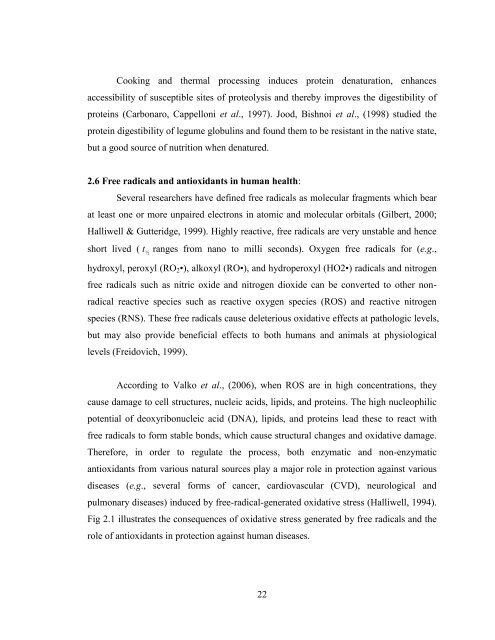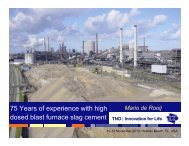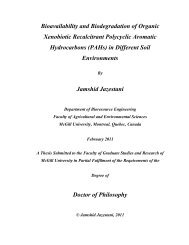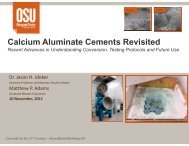i THERMAL PROCESSING EFFECTS ON TOTAL ... - McGill University
i THERMAL PROCESSING EFFECTS ON TOTAL ... - McGill University
i THERMAL PROCESSING EFFECTS ON TOTAL ... - McGill University
You also want an ePaper? Increase the reach of your titles
YUMPU automatically turns print PDFs into web optimized ePapers that Google loves.
Cooking and thermal processing induces protein denaturation, enhances<br />
accessibility of susceptible sites of proteolysis and thereby improves the digestibility of<br />
proteins (Carbonaro, Cappelloni et al., 1997). Jood, Bishnoi et al., (1998) studied the<br />
protein digestibility of legume globulins and found them to be resistant in the native state,<br />
but a good source of nutrition when denatured.<br />
2.6 Free radicals and antioxidants in human health:<br />
Several researchers have defined free radicals as molecular fragments which bear<br />
at least one or more unpaired electrons in atomic and molecular orbitals (Gilbert, 2000;<br />
Halliwell & Gutteridge, 1999). Highly reactive, free radicals are very unstable and hence<br />
short lived ( t½ ranges from nano to milli seconds). Oxygen free radicals for (e.g.,<br />
hydroxyl, peroxyl (RO2•), alkoxyl (RO•), and hydroperoxyl (HO2•) radicals and nitrogen<br />
free radicals such as nitric oxide and nitrogen dioxide can be converted to other non-<br />
radical reactive species such as reactive oxygen species (ROS) and reactive nitrogen<br />
species (RNS). These free radicals cause deleterious oxidative effects at pathologic levels,<br />
but may also provide beneficial effects to both humans and animals at physiological<br />
levels (Freidovich, 1999).<br />
According to Valko et al., (2006), when ROS are in high concentrations, they<br />
cause damage to cell structures, nucleic acids, lipids, and proteins. The high nucleophilic<br />
potential of deoxyribonucleic acid (DNA), lipids, and proteins lead these to react with<br />
free radicals to form stable bonds, which cause structural changes and oxidative damage.<br />
Therefore, in order to regulate the process, both enzymatic and non-enzymatic<br />
antioxidants from various natural sources play a major role in protection against various<br />
diseases (e.g., several forms of cancer, cardiovascular (CVD), neurological and<br />
pulmonary diseases) induced by free-radical-generated oxidative stress (Halliwell, 1994).<br />
Fig 2.1 illustrates the consequences of oxidative stress generated by free radicals and the<br />
role of antioxidants in protection against human diseases.<br />
22









